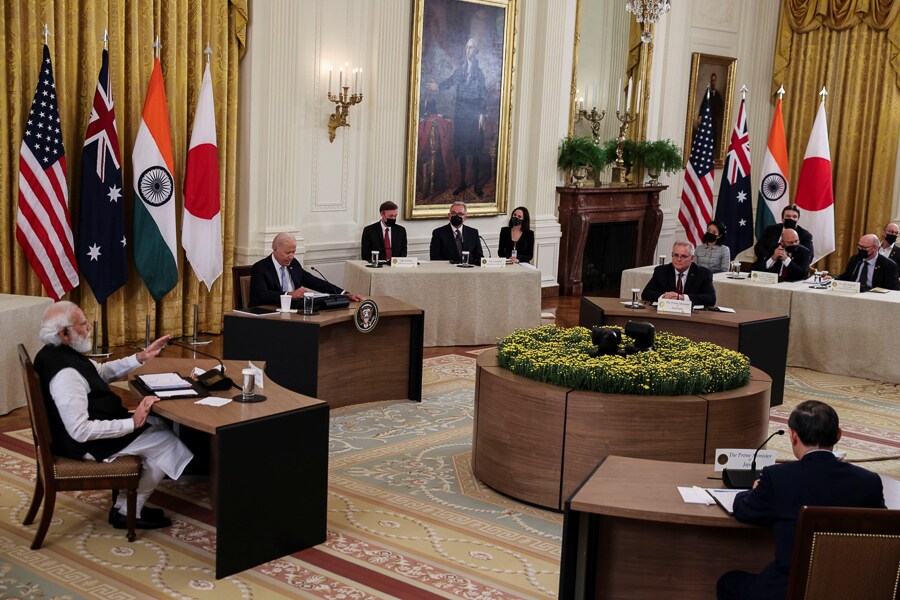
India and the two QUADs: Importance of the grand coalitions to counter China's growing influence
In the days to come, the global policy and economy could witness various moves to counter China's unabated quest for domination. The rejuvenation of the Indo-Pacific Quad and the emergence of the second West Asia Quad are welcome initiatives from an Indian standpoint
 A 'Quad nations' meeting at the Leaders' Summit of the Quadrilateral Framework hosted by U.S. President Joe Biden with Indian Prime Minister Narendra Modi, Australia's Prime Minister Scott Morrison and Japan's Prime Minister Yoshihide Suga in the East Room at the White House in Washington, U.S., September 24, 2021.
A 'Quad nations' meeting at the Leaders' Summit of the Quadrilateral Framework hosted by U.S. President Joe Biden with Indian Prime Minister Narendra Modi, Australia's Prime Minister Scott Morrison and Japan's Prime Minister Yoshihide Suga in the East Room at the White House in Washington, U.S., September 24, 2021.
Photo by Evelyn Hockstein / Reuters
Country-wise groupings or coalitions are products of contemporary political economy and strategic reality and, thus, often undergo cyclical movements of highs and lows. A group that was very active yesterday may turn into inactivity and oblivion today. The reverse could also be true. At the moment, the ‘Quad’ seems to be the flavour of the season.
In terms of its genesis, the Quadrilateral Security Dialogue (popularly called Quad) emerged as a strategic dialogue between the United States, India, Japan and Australia in 2007. The Quad was accompanied by a significant joint military exercise, called Exercise Malabar. The coalition was widely conceived as a response to increased Chinese economic and military power. The Chinese government responded to the Quad by issuing formal diplomatic protests to its members. Over the next ten years or so, the Quad went into inaction, primarily reflecting Australia’s somewhat ambivalent strategy towards China.
Fast forward to Sept 2021. Three weeks after the US President Joe Biden hosted the heads of government of India, Australia, and Japan—the ‘Indo-Pacific Quad’—at the White House on September 24, 2021, came the news that the foreign ministers of India, Israel, and the UAE, and the US Secretary of State had a virtual meeting on October 18, 2021. This second ‘West-Asia Quad’ seemed more focused on economic matters. At this meeting, the US Secretary of State Anthony Blinken stressed common interests the four countries had in the areas of “energy, climate, trade, regional security” while the Indian Foreign Minister S. Jaishankar emphasised economic cooperation and the fight against Covid-19. Thus, what was initially a pure strategic alliance is expected to develop into a more holistic partnership.
The two countries common to both the Quads are India and the US, signifying a deepening of cooperation between the two countries on the matters affecting India’s near-abroad—the Indo-Pacific and West Asia. But what could the two Quads hope to achieve through greater political and economic cooperation, and what does it portend for the immediate and medium-term strategic and economic challenges that India faces?
[This article has been published with permission from IIM Calcutta. www.iimcal.ac.in Views expressed are personal.]







